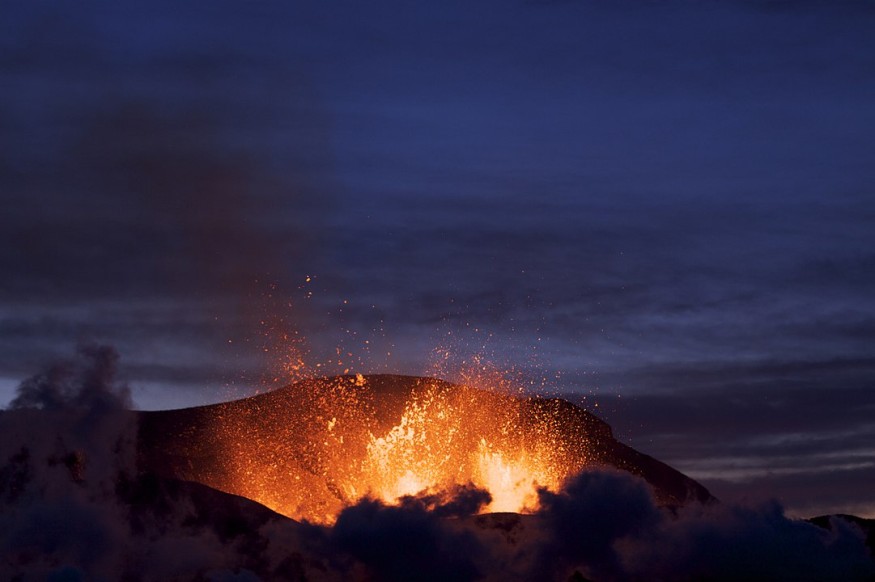A recent study suggests that evidence has been found of a mass extinction event 250 million years in the past that wiped out 90% of all species driven, in part, by a volcanic eruption that triggered a planet-wide volcanic winter named "the Great Dying."
What is a Volcanic Winter?

Similar to nuclear winters, volcanic winters are caused by ash. According to the 2013 Global Environment Team C, This means a reduction in the global temperature due to volcanic ash and sulfuric acid droplets obscuring the Sun and raising the planet's albedo after a large-scale explosive volcanic eruption.
The effects of a sudden volcanic winter and the dramatic plunge in global temperatures is a population bottleneck. Such events dramatically diminish populations to such low levels that evolutionary changes are forced on the surviving populations.
One of the most recent occurrences of volcanic winters is the 1991 eruption of Mount Pinatubo, the Philippines that cooled the global temperature for roughly 2-3.
ALSO READ : Titanic Mantle Plume "Tree" Moves Magma to Earth's Surface as Imaged by Seismic Tomography
The Great Dying: A Cataclysm Wiping Out 90% of All Life 250 Million Years Ago
A recent study led by researchers from the Chinese Academy of Sciences studying contemporary copper-rich deposits from the Chinese province of Sichuan stumbled upon anomalies in the rocks under observation. The team found that rocks were covered in layers of volcanic ash that suggest their formation by sulfur-rich emissions originating from a nearby volcano.
When sulfur aerosols are injected into the planet's atmosphere, it reflects incoming sunlight into the void of space, modifying the clouds and resulting in rapid cooling.
Researchers believed that the volcanism in China may have temporarily lowered the average planet-wide temperatures by roughly 4 degrees Celsius in a study published in the journal Science Advances, titled "Felsic volcanism as a factor driving the end-Permian mass extinction."
The team of researchers suggests that the sulfur-rich volcanism may have been an unknown stressor in the rising action to the End-Permian extinction that occurred 250 million years ago that directly contributed to the loss of 90% of species in a devastating global cataclysm.
Michael Rampino, the lead author and researcher from New York University, explains that the team began analyzing the geologic records during the Great Dying. Finding that the End-Permian global extinction event may have had multiple causes in both marine and non-marine species, reports DailyMail.
The End-Permian extinction that occurred millions of years ago has been commonly associated with different volcanic activity, specifically the catastrophic eruption of blood basalts that constitute Russia's vast Siberian Traps.
Rather than a brief explosive episode common in volcanic eruptions, the formation of the igneous province saw 1 million cubic miles of rock from the runny lava over the period of 2 million years. These eruptions are believed to have caused considerable environmental stress, including severe global warming that resulted in the release of carbon dioxide and reduced the oxygen content of the world's oceans that are effectively suffocating much marine life.
RELATED ARTICLE : Spanish Island La Palma Turned Into Tourist Attraction This Holiday Even With the Continuous Volcanic Eruption
Check out more news and information on Volcano in Science Times.












